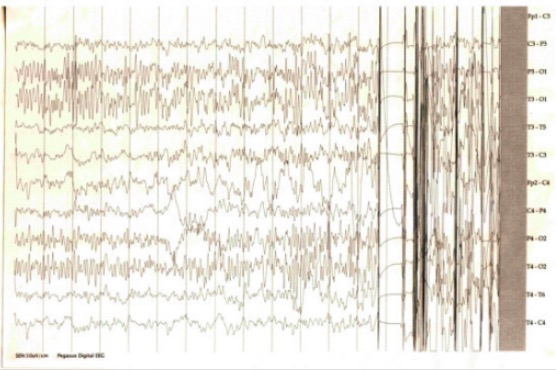Playlist
Show Playlist
Hide Playlist
Status Epilepticus: Management
00:01 If you see a patient who you suspect is having a seizure what you do? Well, the first thing we have to remember is how much time it's been going on It's key to ask the question is: When did it start?" Remember, it takes at least 35 probably 45 minutes baby or child is going to have brain damage from continuous seizing. 00:24 The first thing you should do if you encounter a patient seizing is take your own pulse. 00:29 Calm down. 00:30 You have some time. 00:32 It's not a rush or an emergency and is the first thing I see students do on the wards as they get frantic, they get nervous and then they can't think straight. 00:41 So, what I tell people is take your own pulse when you see a baby who is seizing. 00:46 Then, check the time. 00:48 We need to know how long the seizure is been going on. 00:52 And we need to take a second to describe the seizure look for eye movements Is this generalized or this focal and then became generalized. 01:01 It is important to understanding all these things so we can make the diagnosis later. 01:06 Focal seizures are often pathologic. 01:09 and involve a problem in the brain whereas generalized seizures are more likely a seizure disorder or if the child is febrile, a simple febrile seizure. 01:19 It is important to keep track of the ABC's. This is a common trick test question when they ask a complicated scenario and then the real answer is ABCs so remember your basic CPR. 01:33 Place monitors on the child place an IV if you can but you can actually reverse a seizure without it I think In babies always get a D stick or a dextrose level because the glucose being low is a common cause for child having a seizure and may indicate either a metabolic disorder or a prolonged fasting state. 01:53 If you are going to treat the seizure, we'll start with Midazolam. 01:57 I prefer to give Midazolam through the nose and the reason I prefer that to say rectal Valium is it's a lot easier say in the supermarket to squirt something in a child's nose than to disrobe them and squirt something into their rectum. 02:10 That aside, it is not commercially available typically to get nasal Midazolam compared to rectal Valium which they sell for quite a bit of money. 02:21 In the hospital setting, we can also do IV or IM lorazepam Then we can continue to repeat the benzodiazepines at least two times until the seizure stops. 02:36 After multiple administrations of benzodiazepines we may choose to move to an antiseizure med. 02:43 In children under one, We would do phenobarbital and in children over one we usually start with something like levetiracetam. 02:52 Now, let's go through these drugs. 02:54 We've got Levetiracetam (commonly called Keppra), it's given at 40 mg/kg IV. 03:01 You may not give it IM. And it's given over 10 minutes. 03:04 It can be given a little bit faster and there's a benefit to that. 03:08 The downside is fatigue. 03:11 Phenobarbital is also 20 mg per kilo. You can see an easy dosing scheme here. 03:18 It's better for children typically under one years of age but can cause sedation and low blood pressure or a low respiratory rate so be ready to provide some respiratory support.
About the Lecture
The lecture Status Epilepticus: Management by Brian Alverson, MD is from the course Pediatric Neurology.
Included Quiz Questions
A child starts seizing in front of you on the floor of the supermarket. What is the first thing you do?
- Check the time/duration and describe the episode
- Provide mouth-to-mouth resuscitation
- Check for pulses
- Hold the tongue down with a spoon
- Call 911
Which of the following medications is the best first choice for seizure control?
- Nasal midazolam
- Intrarectal diazepam
- Intravenous phenytoin
- Intravenous magnesium sulfate
- Intravenous phenobarbital
What are common side effects of keppra? Select all that apply.
- Fatigue
- Delusions
- Ischemic stroke
- Hemorrhagic stroke
- Nasopharyngitis
Which of the following tests must be performed in a seizing baby?
- Finger stick glucose test
- Urine drug screen
- Skin PPD test
- Blood culture
- Lumbar puncture
Customer reviews
5,0 of 5 stars
| 5 Stars |
|
3 |
| 4 Stars |
|
0 |
| 3 Stars |
|
0 |
| 2 Stars |
|
0 |
| 1 Star |
|
0 |
Very good explanation of the steps and mindset to have in case of seizures. Clear explanation of the 3 anti-seizure medication.
Me gusta porque es muy puntual con el tema, y el manejo del mismo
It is very usefull, focused and illustrative, clear voice I recoment it to all pediatrician and pediatric neurologist




